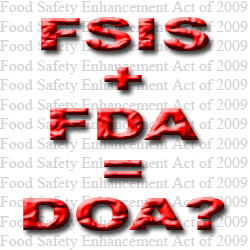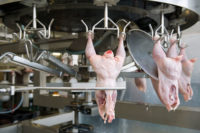
Will the bill pass Senate muster?
According to Leonard, the legislation has two strikes against it. First, the proposal took shape in a series of compromises among a tightly knit group of consumer and non-government organizations. They wanted to see the creation of a single group, a merger of FDA and the Food Safety and Inspection Service (FSIS) of the USDA to safeguard
The new bill could leave the public more vulnerable to food-borne disease, says Leonard. For example, FDA will be mandated to operate a risk-based food safety system. It would put food into five risk categories, ranking food makers and producers from the least to most risky. According to Leonard, with limited resources, FDA would concentrate on those producers producing the most high-risk foods. Where this concept falls apart, says Leonard, is the increasing number of incidents of horticultural products (traditionally low-risk) contaminated with pathogens of animal origin (traditionally high-risk).
The House bill on FDA reforms goes to the US Senate, where the outlook is dim, according to Leonard. “Any Senate action in 2009 must wait until health reform and climate legislation is adopted,” says Lenoard.
To read the entire document, Food safety in the legislative grinder, visit IATP.
